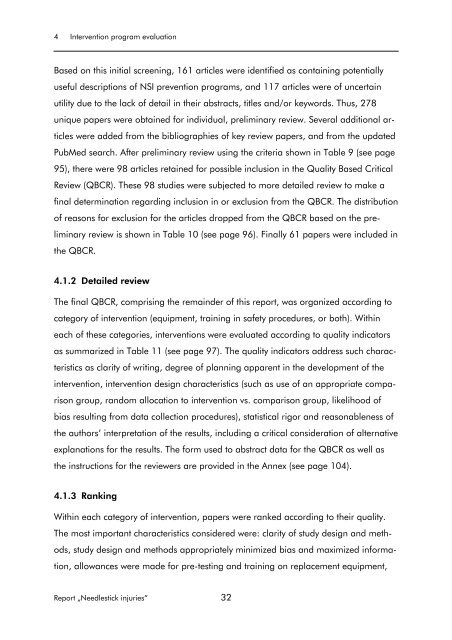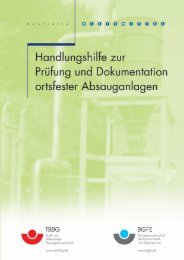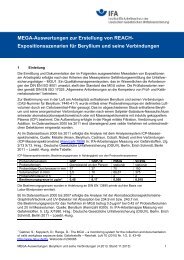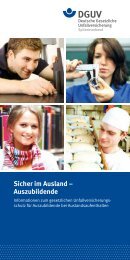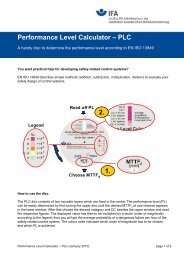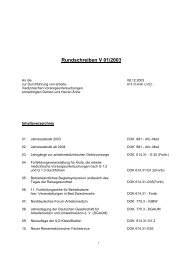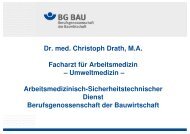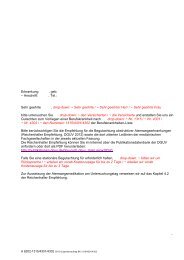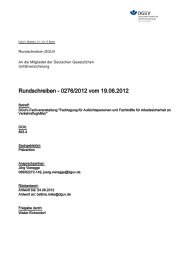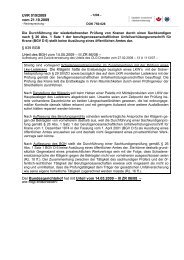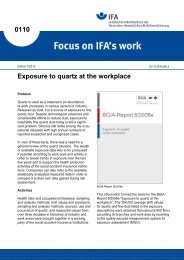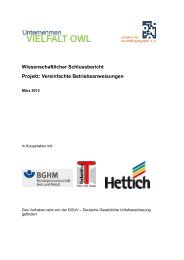Effectiveness of measures to prevent needlestick injuries among ...
Effectiveness of measures to prevent needlestick injuries among ...
Effectiveness of measures to prevent needlestick injuries among ...
Create successful ePaper yourself
Turn your PDF publications into a flip-book with our unique Google optimized e-Paper software.
4 Intervention program evaluation<br />
Based on this initial screening, 161 articles were identified as containing potentially<br />
useful descriptions <strong>of</strong> NSI <strong>prevent</strong>ion programs, and 117 articles were <strong>of</strong> uncertain<br />
utility due <strong>to</strong> the lack <strong>of</strong> detail in their abstracts, titles and/or keywords. Thus, 278<br />
unique papers were obtained for individual, preliminary review. Several additional ar-<br />
ticles were added from the bibliographies <strong>of</strong> key review papers, and from the updated<br />
PubMed search. After preliminary review using the criteria shown in Table 9 (see page<br />
95), there were 98 articles retained for possible inclusion in the Quality Based Critical<br />
Review (QBCR). These 98 studies were subjected <strong>to</strong> more detailed review <strong>to</strong> make a<br />
final determination regarding inclusion in or exclusion from the QBCR. The distribution<br />
<strong>of</strong> reasons for exclusion for the articles dropped from the QBCR based on the pre-<br />
liminary review is shown in Table 10 (see page 96). Finally 61 papers were included in<br />
the QBCR.<br />
4.1.2 Detailed review<br />
The final QBCR, comprising the remainder <strong>of</strong> this report, was organized according <strong>to</strong><br />
category <strong>of</strong> intervention (equipment, training in safety procedures, or both). Within<br />
each <strong>of</strong> these categories, interventions were evaluated according <strong>to</strong> quality indica<strong>to</strong>rs<br />
as summarized in Table 11 (see page 97). The quality indica<strong>to</strong>rs address such charac-<br />
teristics as clarity <strong>of</strong> writing, degree <strong>of</strong> planning apparent in the development <strong>of</strong> the<br />
intervention, intervention design characteristics (such as use <strong>of</strong> an appropriate compa-<br />
rison group, random allocation <strong>to</strong> intervention vs. comparison group, likelihood <strong>of</strong><br />
bias resulting from data collection procedures), statistical rigor and reasonableness <strong>of</strong><br />
the authors’ interpretation <strong>of</strong> the results, including a critical consideration <strong>of</strong> alternative<br />
explanations for the results. The form used <strong>to</strong> abstract data for the QBCR as well as<br />
the instructions for the reviewers are provided in the Annex (see page 104).<br />
4.1.3 Ranking<br />
Within each category <strong>of</strong> intervention, papers were ranked according <strong>to</strong> their quality.<br />
The most important characteristics considered were: clarity <strong>of</strong> study design and meth-<br />
ods, study design and methods appropriately minimized bias and maximized informa-<br />
tion, allowances were made for pre-testing and training on replacement equipment,<br />
Report „Needlestick <strong>injuries</strong>“ 32


